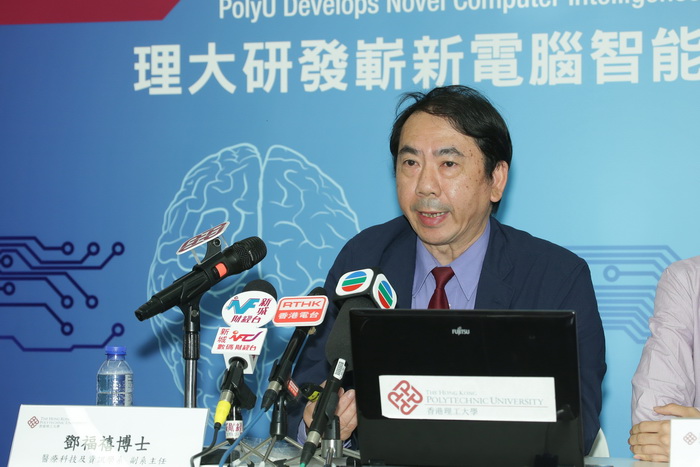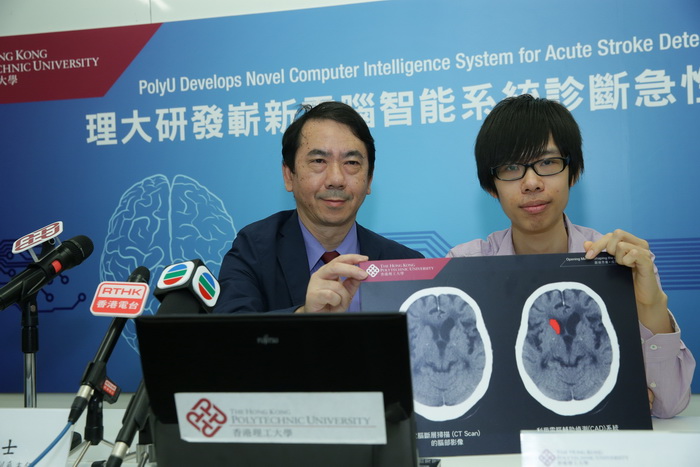The Hong Kong Polytechnic University (PolyU) has developed a novel computer-aided detection system for acute stroke using computer intelligence technology. Reading 80-100 computer images, the system is able to detect if the patient was struck by ischemic stroke or haemorrhagic stroke. The detection accuracy is 90%, which is as high as that conducted by specialists, but at a much reduced time from 10-15 minutes to 3 minutes. The new system serves as a second opinion for frontline medical doctors, enabling timely and appropriate treatment for stroke patients.
Providing treatment to acute stroke patients within the golden hours of stroke treatment, i.e., 3 hours of stroke onset, is vital to saving lives. However, stroke specialists do not work around the clock, increasing the risk of misdiagnosis and delayed diagnosis of acute stroke. This novel system which analyses brain scans could help save lives by assisting non-specialists in diagnosis by providing them a second opinion. Timely diagnosis and treatment within 3 hours of stroke onset also minimise damage.
Developed by experts from the Department of Health Technology and Informatics at PolyU, the computer-aided detection for stroke (CAD stroke) technology combines sophisticated calculations, artificial intelligence and pathology to help medical professionals achieve speedy and accurate diagnosis.
The first part of the system is an algorithm for automatic extraction of areas of suspected region of interest. A computed tomography (CT) scan uses X-rays to take pictures of the brain in slices. When blood flow to the brain is blocked, an area of the brain turns softer or decreases in density due to insufficient blood flow, pointing to an ischemic stroke.
The second part is an artificial neural network to classify region of interest for stroke. The CAD stroke computer "learns" the defining features of stroke, and performs automated reasoning. CT scans are fed into the CAD stroke computer, which will make sophisticated calculations and comparisons to locate areas suspected of insufficient blood flow. It detects where the images look "abnormal", and will be highlighted for doctors’ review. Early changes including loss of insular ribbon, loss of sulcus and dense MCA signs will appear as "abnormalities", helping doctors determine if blood clots are present. As our system is able to detect subtle change in density, it is also able to detect haemorrhagic stroke which is presented as increase in tissue density.
Equipped with the built-in artificial intelligence feature, the CAD stroke technology can learn by experience. With every scan passing through, along with feedback from stroke specialists, the application will improve its accuracy over time.
The life-saving application can also detect subtle and minute changes in the brain that would escape the eye of even an experienced specialist, slashing the chances of missed diagnosis. False-positive and false-negative cases, and other less serious conditions that mimic a stroke can also be ruled out, allowing a fully-informed decision to be made.
*****

